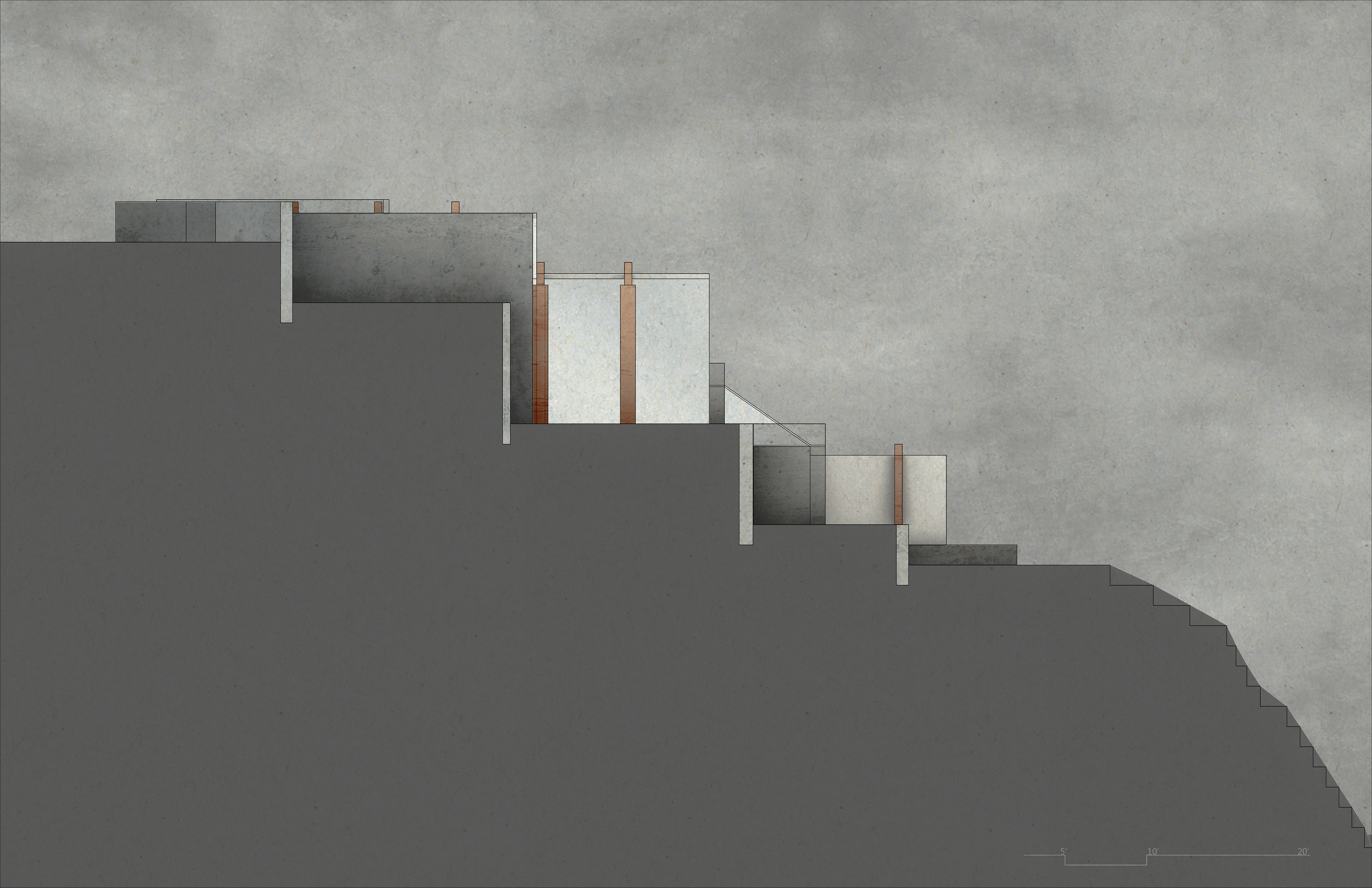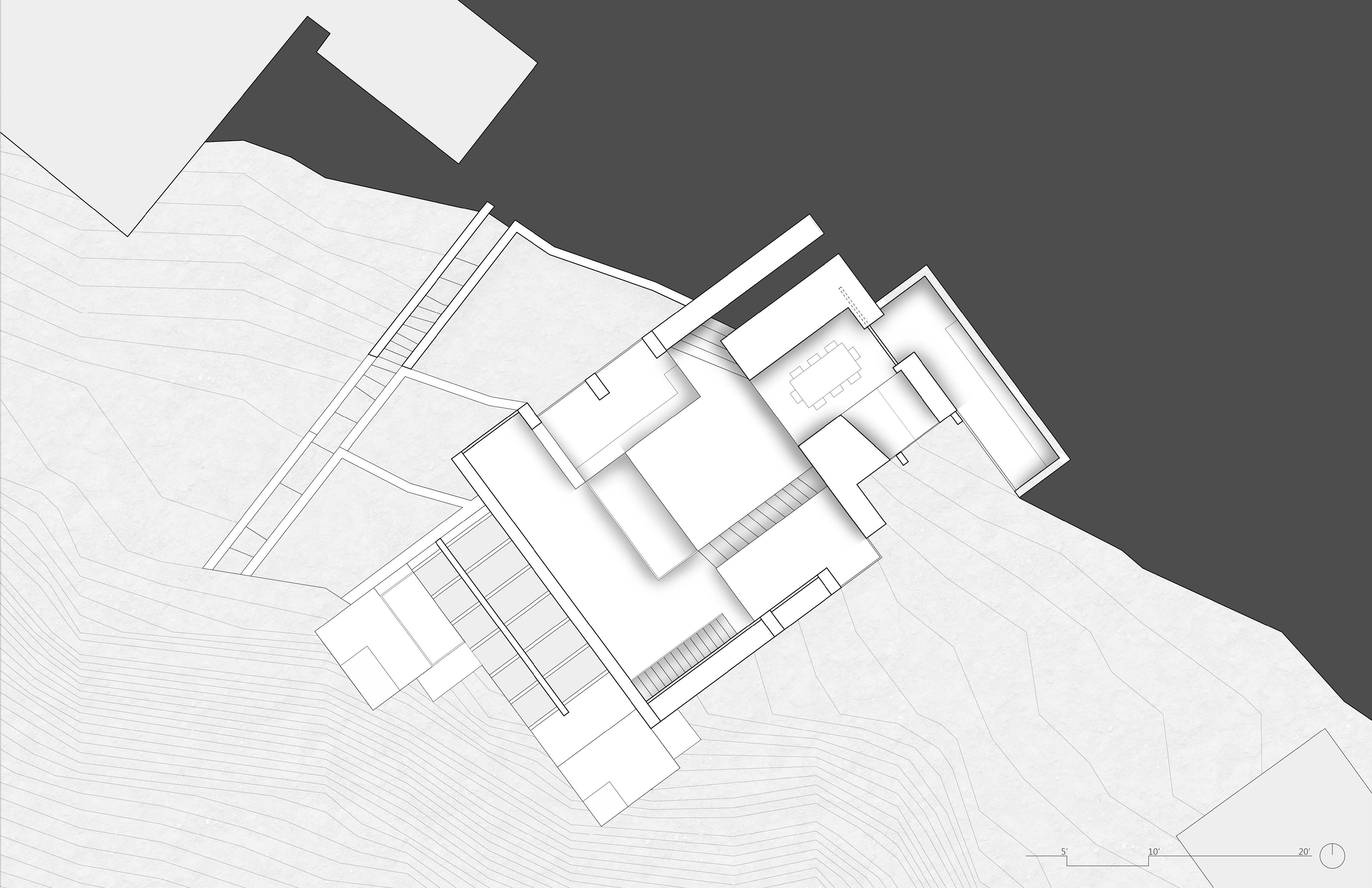The Fall Creek gorge in Ithaca, NY, is characterized by its different levels of erosion: its innate attributes, which occur over time and are manifested through massive excavations which form the gorge’s overall configuration, and the shifts which articulate its surface, namely the relatively ephemeral field of trees that populate the site and the movement of rocks and soil. The conceptual site model is formed by a series of excavations and incisions that represent erosion at its two different scales, magnitudes, and temporalities.
The house projected upon this site is situated upon a translation of the artificial landscape, achieved by similar excavations and incisions into the terrain. Gestural erosion forms a series of territories by terracing the landscape. Bearing walls and floors are then fitted into the site, and the house is enclosed with a lighter framework, alluding to the cast used to create the conceptual site model. In fact, this lighter envelope is an imprint of the terraces below.















